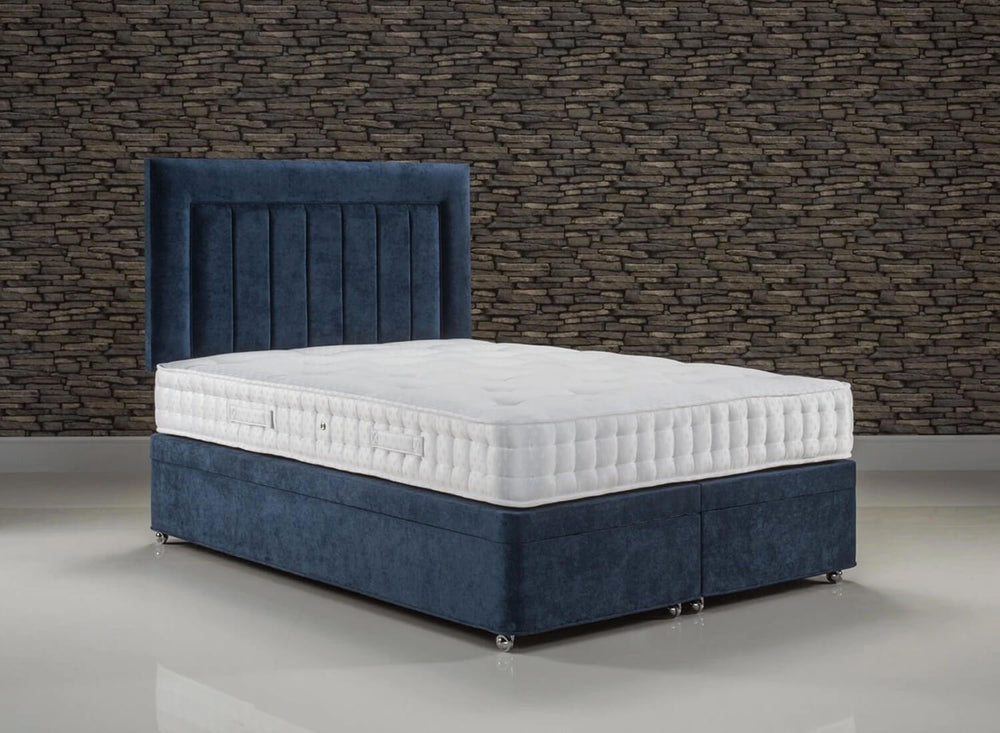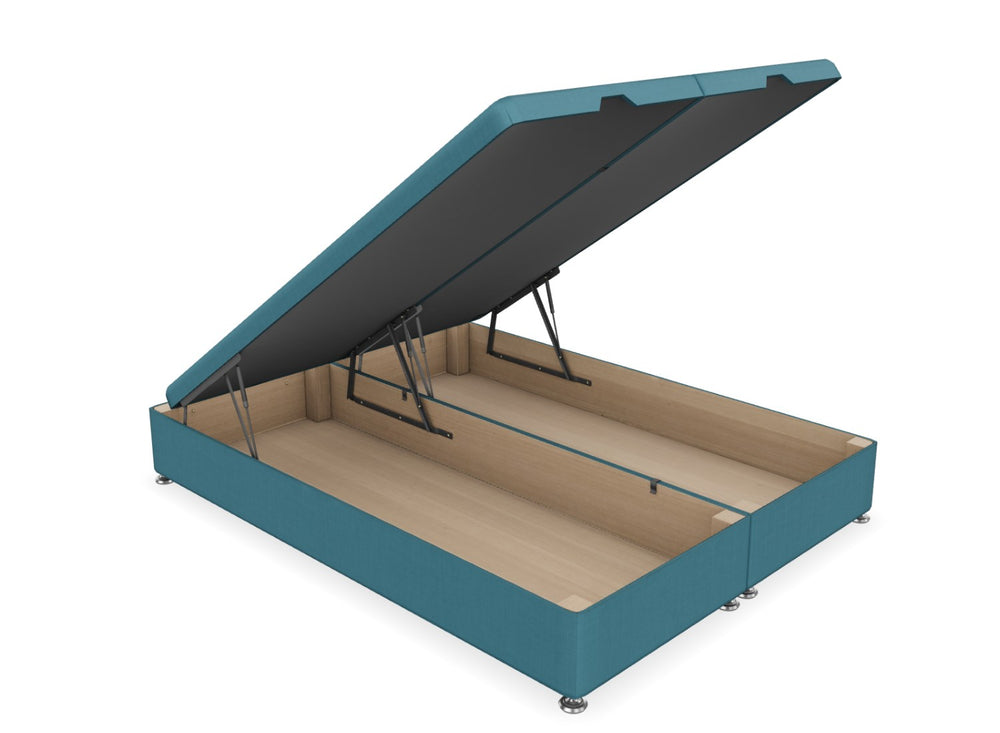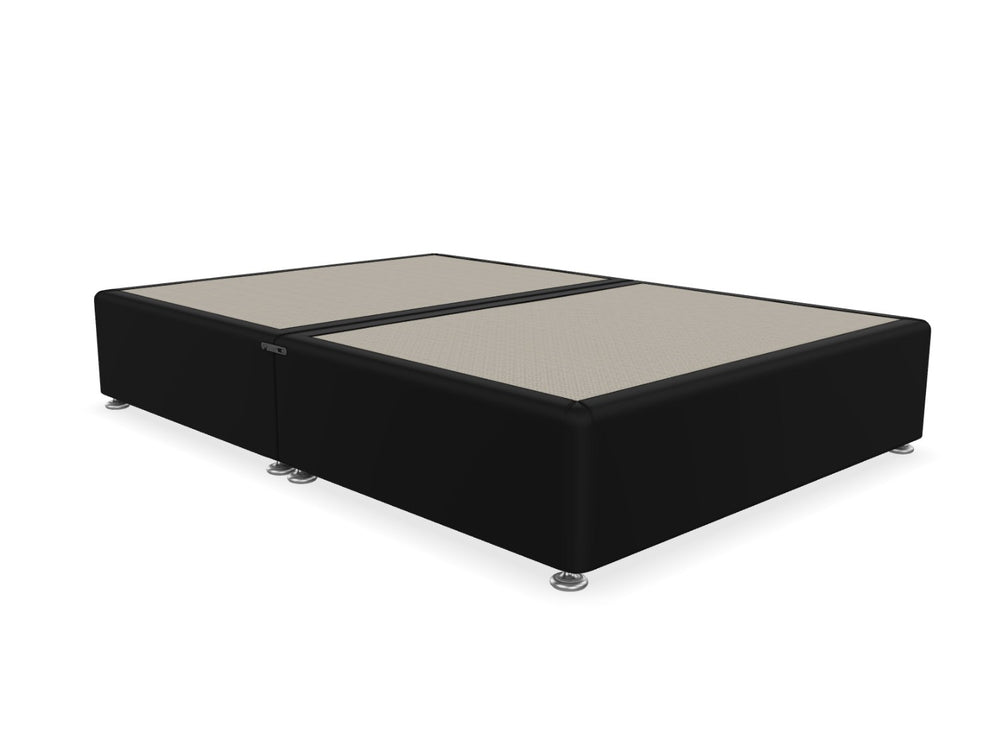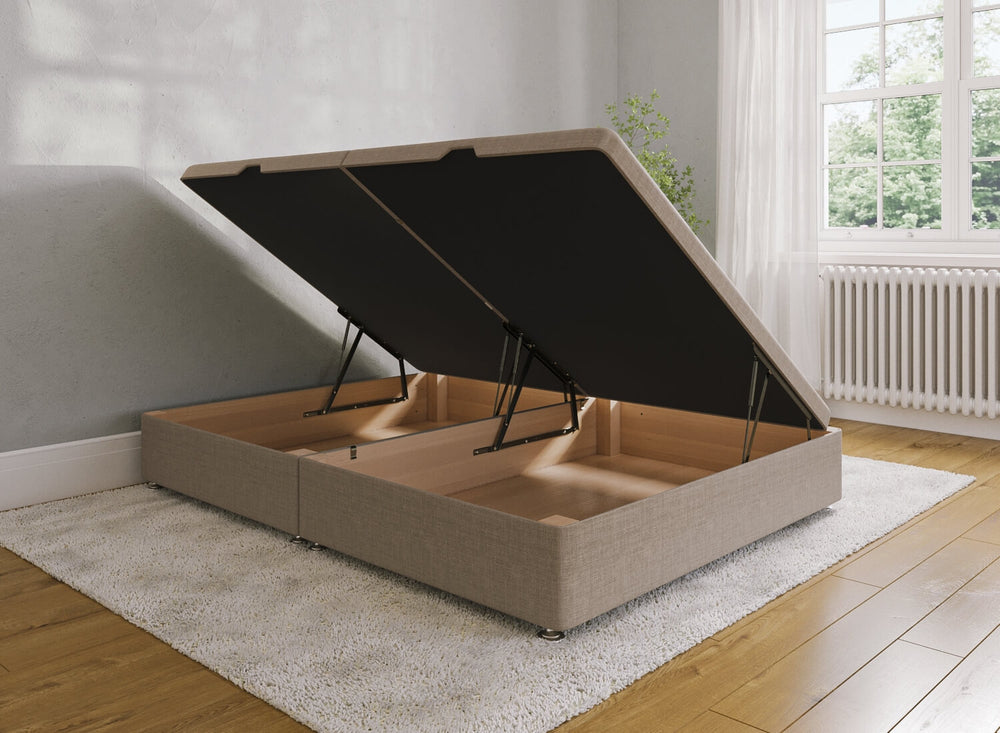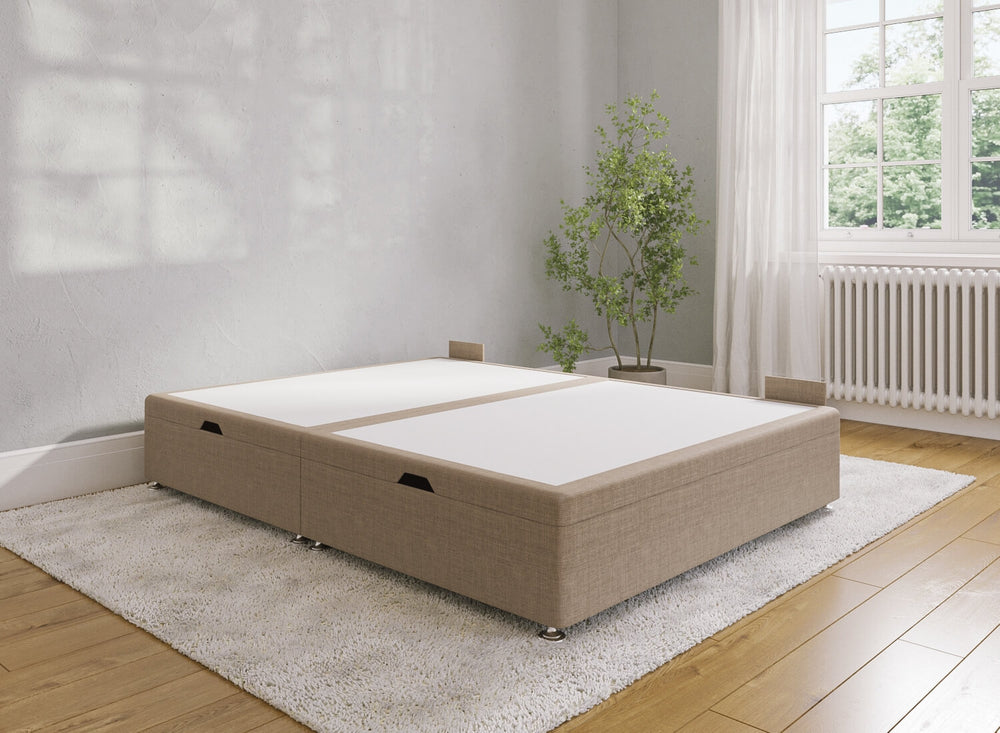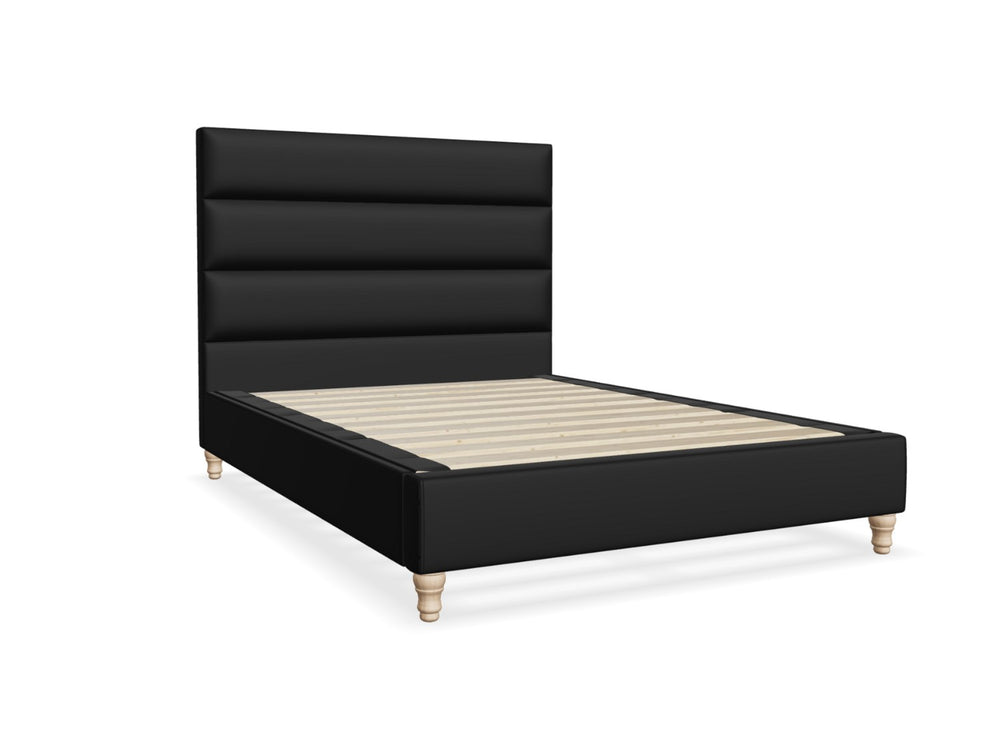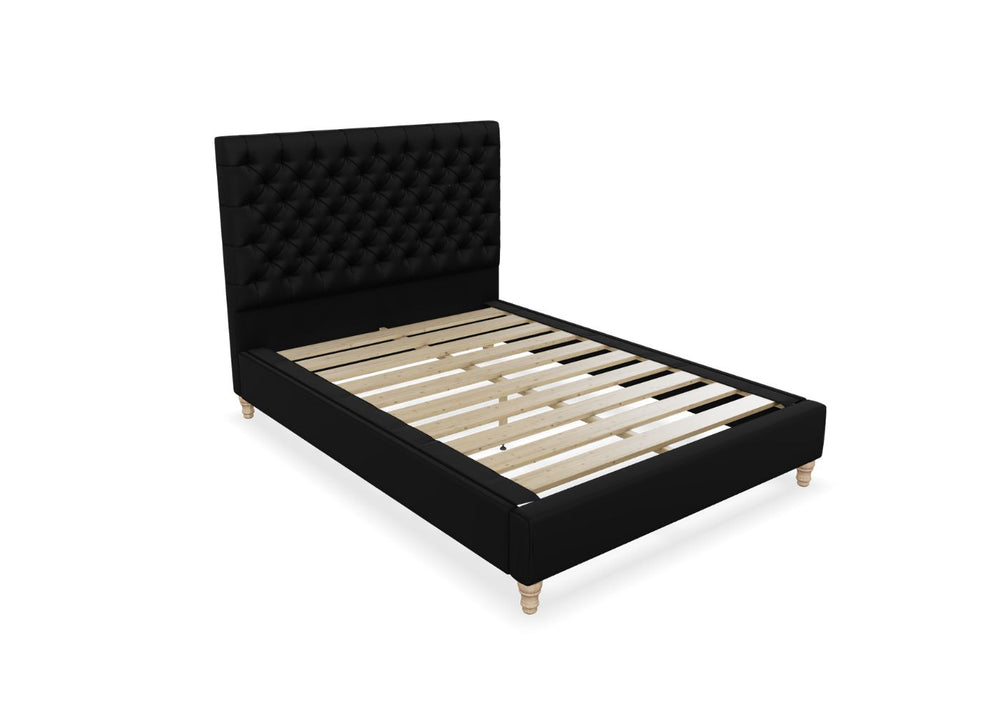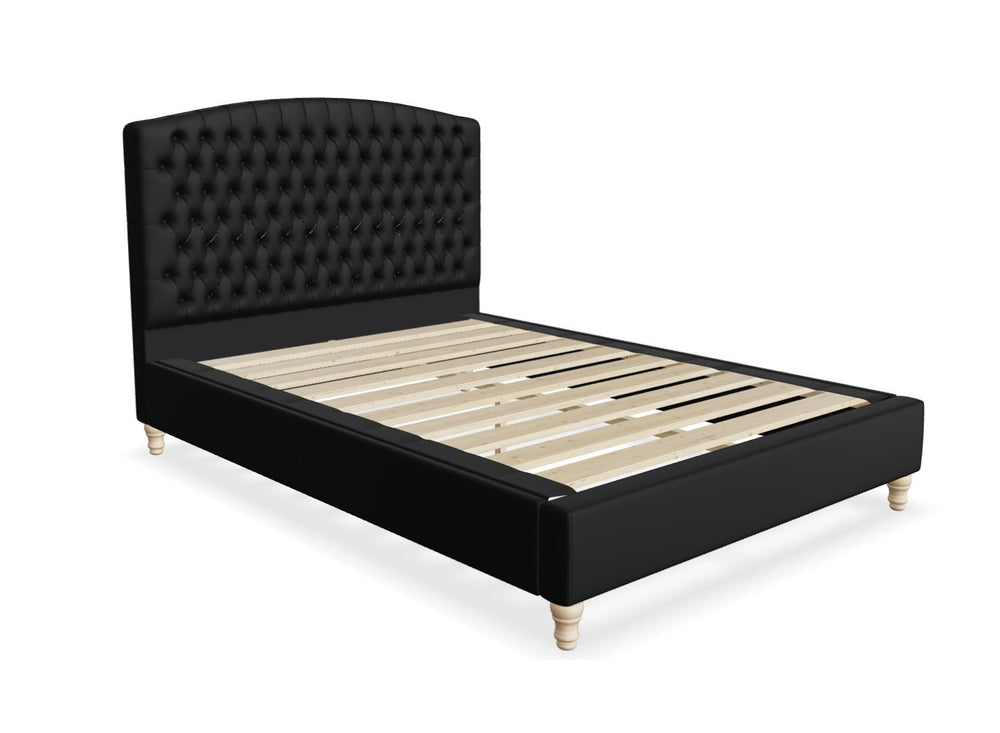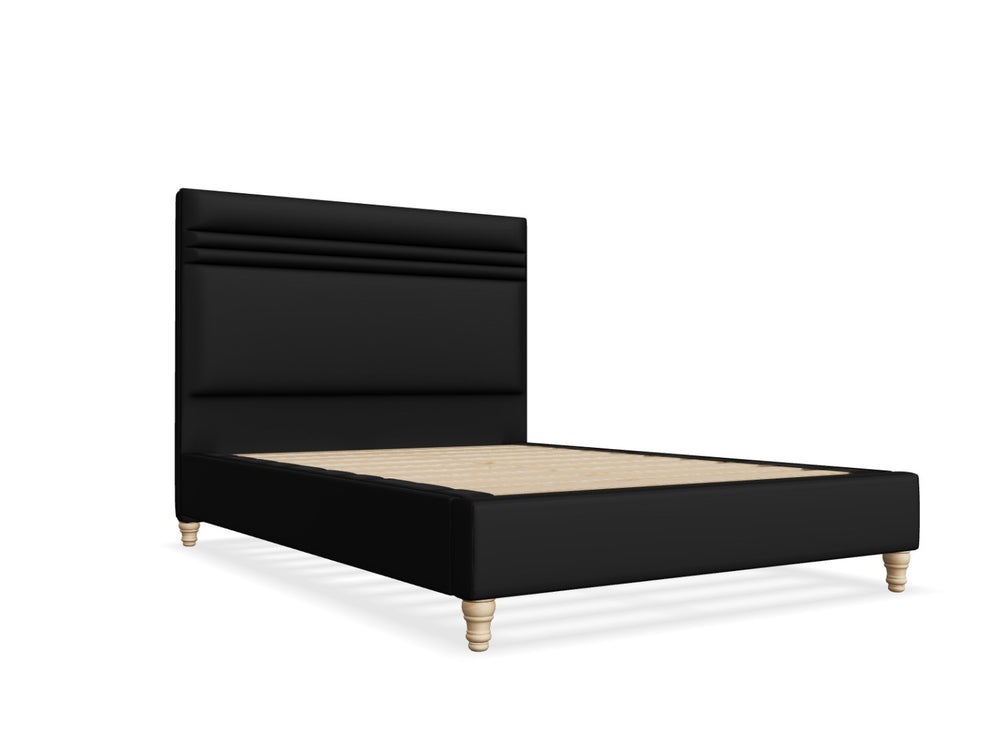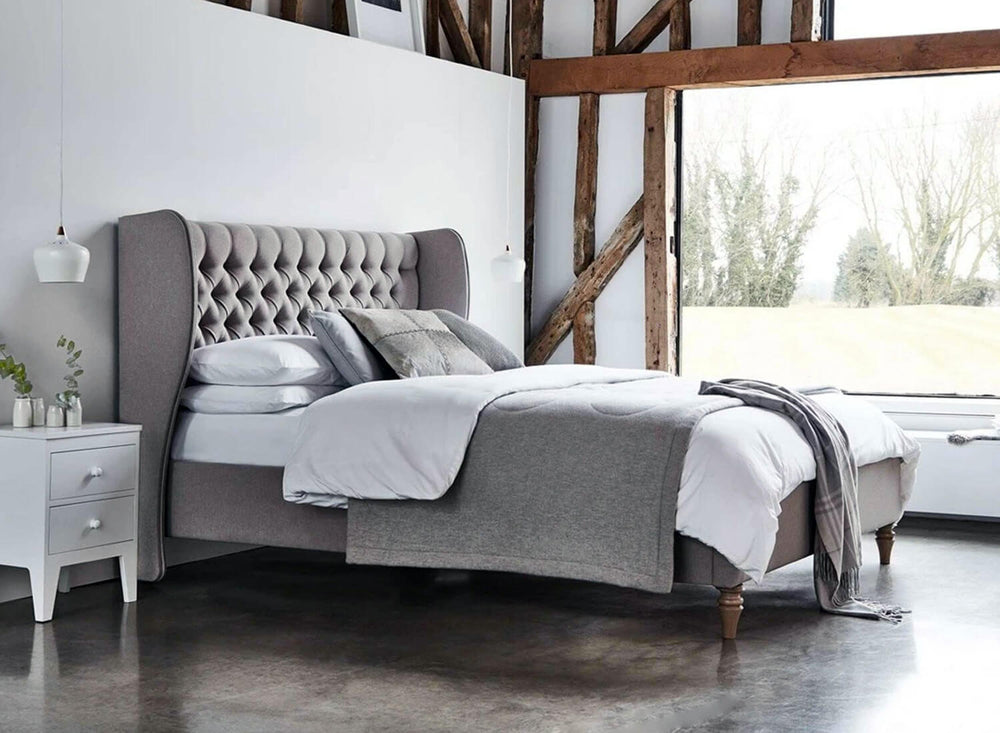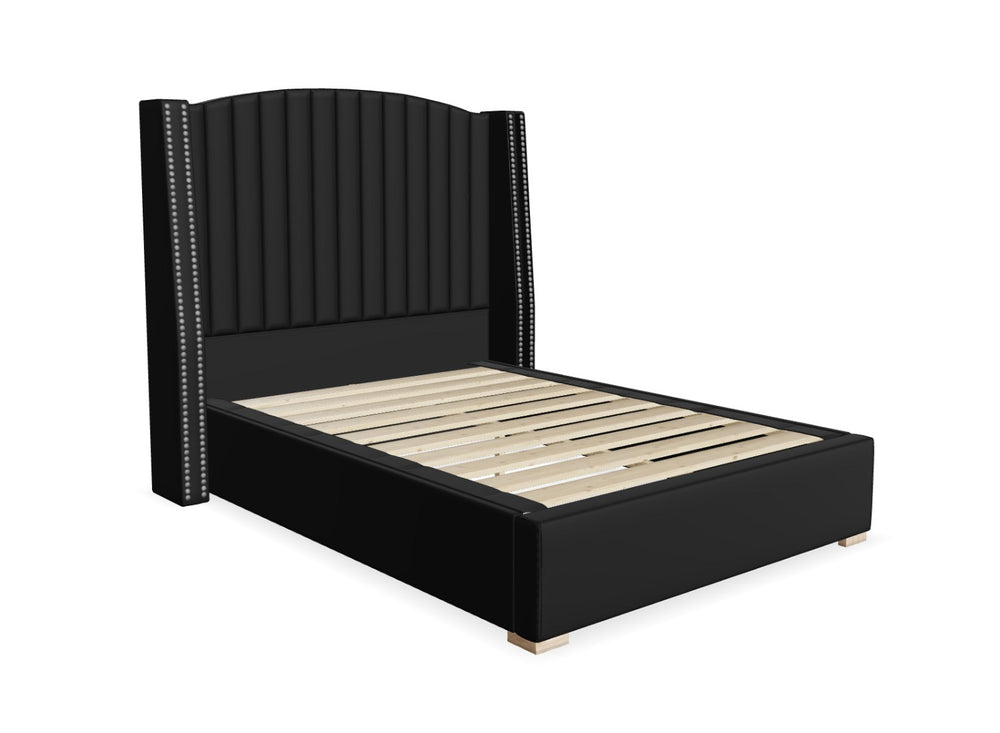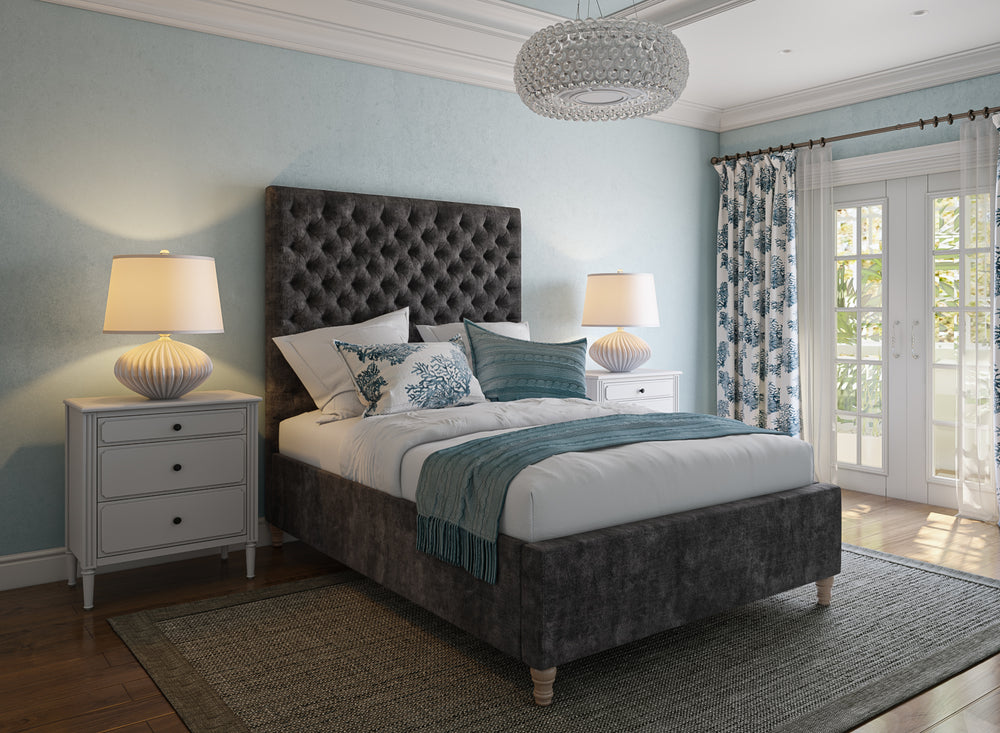
Choosing the right material for your fabric bed frame is essential for both comfort and aesthetics. The fabric you select not only affects the overall look and feel of your bedroom but also impacts durability, maintenance, and functionality. With a variety of fabrics available, each offering unique characteristics, it’s important to understand the benefits and drawbacks of each to make an informed decision.
Fabric choices play a major role in how upholstered beds look, feel, and perform over time. Before exploring individual fabric types in detail, it can be helpful to understand how fabric finishes fit within the wider upholstered bed category. Our guide on what an upholstered bed means for your bedroom explains how comfort, design versatility, and material choice influence upholstered bed frames as a whole.
Velvet
Velvet is a timeless fabric that has been cherished for centuries due to its sumptuous texture and sophisticated appearance. It is a popular choice for those looking to add a touch of luxury and elegance to their bedroom décor.
Benefits
Luxurious Feel
Velvet is renowned for its incredibly soft, plush texture, which offers a sense of opulence and comfort. The dense pile of velvet gives it a unique feel that is both smooth and inviting. When used on a bed frame, it creates a cosy and indulgent atmosphere, making the bed the focal point of the room. This luxurious feel can transform even the simplest bedroom into a sanctuary of comfort and elegance.
Rich Colours
One of the standout features of velvet is its ability to showcase rich, deep colours. Velvet fabrics are available in a wide array of hues, from vibrant jewel tones like emerald green and sapphire blue to sophisticated neutrals like charcoal grey and cream. The way velvet interacts with light gives it a dynamic quality, as the colour can appear to change with different lighting conditions. This depth and variation in colour add a layer of visual interest and can enhance the overall aesthetic of the bedroom.
Durability
Despite its delicate appearance, high-quality velvet is quite durable and can withstand regular use. The fabric’s dense pile construction makes it resistant to abrasion and wear, ensuring that it maintains its luxurious look over time. Velvet made from natural fibres like cotton or silk, as well as synthetic blends, can be particularly durable, making it a practical choice for those who want both beauty and longevity in their bed frame upholstery.

Product: Alby Fabric Bed Frame Finished in Faux Leather Cream
Drawbacks
Maintenance
One of the primary drawbacks of velvet is the level of maintenance it requires to keep its plush appearance. Velvet can attract dust and pet hair, necessitating regular vacuuming with a brush attachment to remove surface dirt. Additionally, velvet can develop pressure marks from prolonged contact with objects, which may need to be gently brushed out. Spills should be addressed immediately to prevent staining, and professional cleaning is recommended periodically to maintain the fabric’s luxurious texture and appearance.
Cost
Velvet is typically more expensive than other upholstery fabrics due to the intricate production process and the luxurious materials used. Natural velvet made from silk or high-quality cotton can be particularly costly. While there are more affordable synthetic velvet options available, they may not offer the same level of richness and durability as natural velvet. For those on a budget, the higher cost of velvet might be a significant consideration.
In summary, velvet is a fabric that offers unparalleled luxury and sophistication, making it a perfect choice for those looking to elevate their bedroom décor. Its rich colours and plush texture can create a warm and inviting atmosphere, while its durability ensures it remains beautiful for years to come. However, the higher maintenance requirements and cost are important factors to consider when choosing velvet for your bed frame.
Linen
Linen is a timeless fabric known for its natural beauty, breathability, and eco-friendly properties. It has been used for centuries and remains a popular choice for various applications, including bed frames. Let’s explore the benefits, drawbacks, and ideal uses of linen in more detail.
Benefits
Breathability
Linen is a highly breathable fabric, making it an excellent choice for warmer climates or for those who tend to sleep hot. The fabric’s natural fibres allow air to circulate, helping to regulate body temperature and keep you cool and comfortable throughout the night. This breathability also contributes to a fresher and more hygienic sleeping environment, as it helps to wick away moisture and reduce the build-up of heat.
Natural Look
Linen offers a natural, relaxed look that suits various interior styles, from rustic to modern. Its subtle texture and organic appearance add a sense of tranquillity and simplicity to any bedroom. Linen’s natural creases and slightly uneven surface give it a unique charm that enhances its aesthetic appeal. This makes linen an ideal choice for creating a cosy, inviting atmosphere that feels both casual and sophisticated.
Drawbacks
Wrinkling
One of the primary drawbacks of linen is its tendency to wrinkle easily. Linen’s natural fibres lack the elasticity of synthetic materials, which means it can develop creases and wrinkles with regular use. This characteristic can be both a charm and a challenge, as some people appreciate the relaxed, lived-in look of wrinkled linen, while others prefer a more polished appearance. Frequent smoothing or ironing may be required to maintain a neat look, especially for those who prefer a crisp and tidy bed.
Durability
While generally durable, linen can be prone to wear and tear if not treated with care. The fabric’s natural fibres can break down over time, particularly if exposed to harsh conditions or rough handling. Linen’s durability can be enhanced by proper care, such as gentle washing, avoiding excessive heat, and using a fabric protector. However, it may not be the best choice for high-traffic areas or homes with young children or pets, where the risk of damage is higher.
In summary, linen is a versatile and eco-friendly fabric that brings a natural, relaxed aesthetic to any bedroom. Its breathability and sustainability make it an excellent choice for those seeking comfort and environmental consciousness. While it does require some maintenance to manage wrinkling and ensure durability, the timeless appeal and versatility of linen make it a popular and enduring choice for bed frames and other bedroom furnishings.

Product: Side Lift Ottoman Bed Finished in Faux Linen Slate Grey
Flat Weave
Flat weave fabrics are a popular choice for upholstery due to their practicality and versatility. Characterized by their tight, even weave, these fabrics offer a range of benefits and a few drawbacks. Here, we’ll delve deeper into the advantages, disadvantages, and ideal uses of flat weave fabrics for bed frames.
Benefits
Versatility
Flat weave fabrics are highly versatile, available in a wide array of patterns, colours, and textures. This variety allows them to fit seamlessly into various design schemes, from contemporary to traditional, and everything in between. Whether you’re looking for a bold pattern to make a statement or a subtle, neutral tone to blend with existing décor, flat weave fabrics provide ample options to suit your style preferences. This versatility makes it easy to find a flat weave fabric that complements your bedroom’s aesthetic.
Durability
One of the standout features of flat weave fabrics is their durability. The tight weave structure makes these fabrics resistant to wear and tear, making them suitable for everyday use. They can withstand the rigors of daily life, including active households with children and pets. This durability ensures that your bed frame will maintain its appearance and functionality over time, providing long-lasting value.
Easy Maintenance
Flat weave fabrics are relatively easy to clean and maintain compared to more delicate fabrics like velvet or suede. Their smooth surface resists snagging and is less likely to trap dust and debris. Most flat weave fabrics can be spot cleaned with mild detergent and water, and many are also machine washable. This ease of maintenance makes flat weave fabrics a practical choice for busy households where convenience is a priority.
Drawbacks
Comfort
While flat weave fabrics offer many practical benefits, they may not provide the same level of softness and comfort as plush fabrics like velvet or suede. The tight weave can feel more rigid and less inviting, which might be a drawback for those who prioritize a cosy, cushioned feel in their bedding. However, pairing flat weave upholstery with soft pillows and blankets can help enhance overall comfort.
Appearance
Flat weave fabrics might lack the luxurious appearance of other fabrics like velvet or leather. Their straightforward, no-frills look can be perceived as less glamorous or sophisticated. For those seeking an opulent or high-end aesthetic, flat weave might not deliver the desired visual impact. However, their understated elegance can be an advantage in minimalist or casual design schemes where simplicity and functionality are key.
In summary, flat weave fabrics offer a blend of versatility, durability, and ease of maintenance, making them a practical choice for bed frames and other bedroom furnishings. While they may not provide the same level of softness and luxury as some other fabrics, their straightforward elegance and wide range of design options make them a popular and reliable choice for creating stylish, family-friendly bedroom spaces.

Product: Round Beds Finished in Faux Linen Navy
Leather
Leather is a luxurious and enduring fabric choice for bed frames, known for its exceptional durability and timeless elegance. Its unique characteristics make it a popular option for those looking to invest in a high-quality, long-lasting piece of furniture. Here, we’ll explore the benefits, drawbacks, and ideal uses of leather in more detail.
Benefits
Durability
One of the most significant advantages of leather is its durability. Leather is known for its strength and resilience, capable of withstanding years of use without showing significant signs of wear. High-quality leather can resist scratches, tears, and punctures, making it an excellent choice for households with children or pets. With proper care, leather bed frames can maintain their beauty and functionality for decades, offering an excellent return on investment.
Classic Appeal
Leather exudes a timeless, sophisticated look that can elevate the aesthetic of any bedroom. Its rich texture and natural variations give each piece a unique character, adding depth and interest to the décor. Leather can complement a wide range of styles, from traditional to modern, making it a versatile choice that adapts well to changing trends and tastes. Whether you prefer a sleek, contemporary design or a more classic, rustic look, leather can enhance the overall elegance and refinement of your space.
Easy to Clean
Leather is relatively easy to clean and maintain, making it a practical choice for busy households. Unlike fabric, leather does not harbour dust mites, pet dander, or other allergens, making it an excellent option for allergy sufferers. Most spills can be wiped away with a damp cloth, and regular dusting can keep the surface looking pristine. For more thorough cleaning, leather-specific cleaners and conditioners can help preserve the material’s natural lustre and prevent it from drying out or cracking.
Drawbacks
Cost
One of the primary drawbacks of genuine leather is its cost. High-quality leather can be quite expensive compared to other upholstery materials. The price reflects the material's durability, longevity, and luxurious appeal, but it may be a significant investment for some budgets. However, for those willing to invest, the long-term benefits and timeless beauty of leather often justify the higher upfront cost.
Temperature Sensitivity
Leather can be sensitive to temperature changes, which can affect its comfort level. In winter, leather can feel cold to the touch, making it less inviting to sit or lie on. Conversely, in summer, leather can become hot and sticky, especially if the room is not adequately cooled. To mitigate these issues, using temperature-regulating accessories like throws or mattress toppers can help maintain a comfortable sleeping environment year-round.
Conclusion
Choosing the right fabric for your bed frame depends on your lifestyle, budget, and aesthetic preferences. Velvet offers luxury, linen provides breathability, flat weave ensures durability, suede adds softness, and leather brings timeless elegance. Understanding the benefits and drawbacks of each fabric type will help you make an informed decision, ensuring your bed frame not only looks great but also meets your practical needs.
If you are choosing a fabric as part of a wider upholstered bed design, it can be useful to step back and consider how different materials affect comfort, styling, and long-term use. Our guide on what an upholstered bed means for your bedroom provides a broader overview to help you decide which upholstered option best suits your space.

Shane Cousins

Marketing Executive
For the past five years, Shane has been a valued member of the Endurance Beds team, drawing on his degree and background in consumer insight research to shape engaging, design-focused content. He loves helping customers spark their own creativity, from colour matching to discovering new stylistic approaches for their bedrooms. "Working for a bed company taught me so much more than just product details. It introduced me to the science of sleep, the art of product matching, and how small choices can transform rest. I’ve since developed into a bit of a sleep expert, using what I’ve learned to share honest, practical advice through my content."


